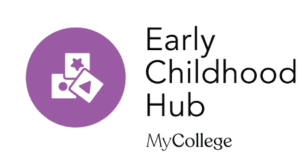Supporting a child with a cleft in the Early Years

Daniel Sumner, Totley All Saints CE Primary School, UK
Cleft lip and/or palate affects around 1,200 children born each year in the UK – one in 700. Clinical treatment is highly effective and outcomes for these children have improved across many measures in recent years (CRANE, 2020, 2021). However, despite there being no causal relationship between cleft and neurological function or intelligence (Dardani et al., 2020), children with a cleft perform significantly less well at school on average than those who are unaffected. Recent studies have shown that both parents and staff believe that more could and should be done in education settings to support children with a cleft (Stock and Ridley, 2018; Stock et al., 2019). By understanding cleft better, those of us working in Early Years will be in a strong position to be partners in mitigating against the challenges faced by these children, which often include speech, language and communication difficulties and hearing impairment. Lower attainment is seen in the Early Years, across all areas of learning, and extends throughout Key Stages 1 to 4 (Fitzsimons et al., 2018; Grewal et al., 2020). There are several reasons why children with a cleft could be struggling with their learning and cognitive development, and there is much that educational professionals can do to help.
What is a cleft?
In the early stages of pregnancy, different parts of a baby’s face form separately and then join together. A cleft occurs when the parts do not knit together properly; cleft is known medically as a type of ‘craniofacial abnormality’, which means a problem with the face or skull. Children can have a cleft lip and palate together (33 per cent), or a cleft in either the lip (22 per cent) or the palate (45 per cent) on its own. While around 15 to 30 per cent of clefts are part of a ‘syndrome’, where one or more symptoms occur at the same time, the majority of clefts are unconnected to any other condition.
How is cleft treated?
In the UK, care and treatment are coordinated and carried out by specialist regional NHS Cleft Services, which include plastic surgeons, dentists, nurses, speech and language therapists, psychologists, audiologists and others.
Children with a cleft need early surgery to close the gap left by the tissue not coming together in the womb. A cleft lip will usually be repaired between three and six months and a cleft palate between six and 12 months. There may then be further procedures to help with speech, an alveolar bone graft (usually from the hip bone to the gum) between the ages of seven and 12, to enable adult teeth to come through normally, and other surgery to the nose, lip, jaw or teeth. In addition to surgery, many children born with a cleft need specialist support with hearing and speech, language and communication. There is a 20-year treatment plan in place for all children born with a cleft, although most will not require all the services on offer. All children with a cleft are regularly reviewed in clinics and their care is adjusted according to need.
What are the main challenges that affect learning, and how can Early Years practitioners and school staff help?
Speech, language and communication
Speech and language can be significantly affected by a cleft palate, because the palate is part of the mechanism that blocks off the nose from the mouth. Children with a cleft can have nasal speech and struggle to form certain sounds, especially t, b and d.
Around half of children with a cleft palate will have specialist speech therapy, and 18 per cent require additional surgery for speech purposes (CRANE, 2020). Although surgery and speech therapy are highly effective in eventually resolving any difficulties, 40 per cent of children with a cleft still have speech outside the normal limits at the age of five, and 20 per cent have speech that is considered unintelligible or barely intelligible. (Sell et al., 2015).
Children with a cleft will have priority access to speech and language services if they need it, through the cleft team, and parents are automatically treated as partners in the implementation of strategies. Partnership working between the speech and language therapist and school or Early Years setting has also been shown to be greatly beneficial, but not always straightforward (Baxter et al., 2009). Early Years practitioners should be proactive in establishing communication with the speech and language therapist and learning how best to support the child’s speech and language development themselves. If it is not possible to work directly with the speech and language therapist, Early Years practitioners might invite the parents in to explain and demonstrate how they have been trained by the specialists to support their child’s speech, as some of the same strategies could then be transposed to the setting. Any information, training and advice would need to be shared with all adults working with the child, to ensure a consistent approach.
Speech, language and communication is not an isolated area of difficulty; it can affect every area of a child’s education, and a range of early interventions beyond speech therapy may be beneficial and necessary. Speech helps children to understand and develop language, so problems with speech can also affect how a child learns to read and write (Kamhi and Catts, 2012). Moreover, children normally learn about the world and their place in it through dialogue, and particularly by asking questions. Research has demonstrated the role that preschool children’s own questions play in developing their understanding of a wide range of subjects and areas of life (Chouinard, 2007). Children in these studies were observed to ask on average 76 to 95 information-seeking questions per hour when engaged in a conversation with an adult. If a child’s speech articulation is poor, and the adult in an Early Years setting cannot understand what they are saying, the child risks missing out on this crucial tool for cognitive development. The Cumbria Early Years Team asserts that ‘learning requires language to be understood and responded to (n.d., p. 12)’. This may explain to a significant extent why children with a cleft perform less well in all areas of learning, and not just in speech, language and communication. Additional time and attention from practitioners could go a long way to compensate for the difficulty that the child with a cleft may have in expressing themselves, and it will make an enormous difference to tune in and understand the questions that they are trying to ask.
If necessary, Early Years practitioners and teachers may also consider supplementary communication methods, such as Makaton and visual aids, alongside developing the child’s ability and confidence to speak, although it would be important to consult with the speech and language therapist. In developing any strategy to support a child’s communication, a whole-school approach is important, with effective information sharing and CPD.
In Early Years especially, we know that children learn through play, interacting using their language skills; if children cannot make themselves understood, this process may be disrupted. Children with such challenges can become frustrated and angry, for no reason other than that they are trying to communicate. This has wider implications for their personal, social and emotional development (PSED) and can be a cause of social, emotional and mental health difficulties. It is important for education professionals to be attuned to these issues, and to develop appropriate strategies for communication and behaviour management.
Hearing loss
All children with a cleft palate are more vulnerable than the general population to conductive hearing loss in the middle ear, and 97 per cent of these children will have experienced recurrent episodes of glue ear by the age of two (Dhillon, 1988); problems may come and go through childhood and sometimes into adulthood. There is regular testing, but the frequency of these tests can vary, and there can often be larger gaps between audiology appointments, especially if there has been no recently detected or reported issue with hearing. It is important for staff in Early Years settings to understand that the hearing function of a child with a cleft palate can fluctuate enormously over time, and even with a heavy cold, and education professionals therefore need to be alert to any perceived problem and raise any concerns about hearing with parents. As hearing loss can develop gradually, parents and the child themselves may not know that there is an issue. By building a strong relationship with parents, continuous dialogue around hearing can take place. Early Years settings may be the first to notice that there is a problem, and flag it up for attention. It is common for children with a cleft palate to require grommets or a hearing aid at some stage, and if these are needed then any delay is likely to have a negative effect on education and child development.
There is a lot of information available about supporting a child with hearing loss in the classroom or Early Years setting once the problem is diagnosed. This can come from the local Teacher of the Deaf and from organisations such as the National Deaf Children’s Society (NDCS). Strategies such as ensuring a direct line of sight, carefully managing the listening environment, repeating and rephrasing comments by other children, etc., are all important, and any professional who is working with a hearing-impaired child for the first time will need to learn fast, with appropriate training and support. There is very effective technology available, including radio aids, which can be worn by adults in the setting to help to communicate with a child with a hearing aid. The Teacher of the Deaf might also be able to work with the other children in their group to raise their awareness and understanding. More of a concern is the undiagnosed child, who may appear disengaged, daydreaming or defiant. If this child has a cleft palate, we need to recognise the strong likelihood that they will experience fluctuating hearing loss, identify this as a possible cause for behaviour or processing concerns, and have open and honest communication with parents at the earliest opportunity. Although hearing tests will be scheduled at regular intervals, e.g. every six months, audiologists will want the parents to bring their child straight back if there is any concern about hearing loss in between routine appointments. From an educational point of view, it is vital not to wait.
Visible difference
Despite the incredible skill of surgeons who perform the repair procedures in infancy, children with a cleft have what is known as a ‘visible difference’. This can take various forms, depending on the type of cleft, but there is often significant asymmetry to the lip and nose, and a visible scar on the lip. The gum may appear to be folded inside the mouth, and teeth often come in at unusual angles or in unusual positions. This can cause emotional difficulties for children with a cleft, especially later in their childhood, connected with image, self-esteem and the influence of their peers and wider society.
Although these are problems most commonly associated with adolescence, work done in the Early Years to develop confidence and self-esteem will strengthen the child’s PSED and improve their future adolescent experiences. It is important to recognise that young children start becoming curious about their appearance from an early age; they notice difference, and will often comment on it. Infants and toddlers develop an early sense of ‘what is me and what is not me’, and at age two they recognise and explore physical differences. By the age of three to four, children learn to classify based on colour and size, and make more comments about other people’s hair texture, eye shape and other personal physical characteristics. This is when they also start to notice physical disabilities (Biles, 1994). In education settings, it is helpful to extend our awareness of visible difference, engage with organisations such as Changing Faces, and promote this alongside all other areas of diversityThe recognition of individual differences in terms of race, ethnicity, gender, sexual orientation, socio-economic status, physical ability, religious beliefs and other differences. We can ask the parents of a child with a cleft how they choose to talk about the cleft, what vocabulary they use and how aware the child is of their condition and past operations. All staff need to be absolutely sure that they use neutral or positive vocabulary, and avoid terms that are now considered unacceptable, such as ‘hare lip’ and ‘birth defect’ (Collett and Speltz, 2006). We should be prepared to respond to comments or questions from other children, arising from natural curiosity.
It helps to be aware of any curriculum themes, activities or events that might draw attention to the cleft, and prepare for this. Examples could include anything that requires children to bring in baby photos, often for display, or any discussion of teeth. Although they will not be found through the larger educational suppliers, there are dolls, teddies and Lego figures available with clefts, which help children to feel a sense of belonging. Books about cleft written for children include Jack’s New Smile (Ruth M Trivelpiece, 2017). For everyone’s benefit, Early Years professionals should consider bringing such toys and books into the setting.
Conclusion
Not all children with a cleft experience the same challenges, and the educational difficulties that we have discussed are by no means universal. However, these studies are large and the effects are statistically significant, so it is important for education professionals to take them seriously. The fact that children with a cleft have poorer outcomes across all assessed areas of learning by the age of five (Fitzimons et al., 2018) should be a call to arms for any Early Years practitioners working with them. The Cleft Registry and Audit Network (CRANE, 2020) highlights this as an ongoing area of concern requiring further research. CRANE acknowledges the effect of the COVID pandemic on the completeness of their most recent data, while 2018’s GDPR update has affected their direct linkage to the National Pupil Database and other sources, so it is a challenging time to be gathering such information. Nevertheless, their work continues, and they are currently conducting longitudinal studies of educational outcomes (CRANE, 2021).
Further information and support can be found through the Cleft Lip and Palate Association (CLAPA). By becoming fully aware of the condition, its challenges and the potential impact on education, and by responding to the needs of these children in partnership with parents and clinicians, we can break down the barriers and do our best to reverse this trend.
References
- Baxter S, Brookes C, Bianchi K et al. (2009) Speech and language therapists and teachers working together: Exploring the issues. Child Language Teaching & Therapy 25: 215–234.
- Biles B (1994) Activities that promote racial and cultural awareness. In: Todd CM (Eds) Family child care connections 4(3):1–4. Urbana-Champaign, IL: University of Illinois Cooperative Extension Service.
- Chouinard MM (2007) Children’s questions: A mechanism for cognitive development. Monographs of the Society for Research in Child Development 72(1): 1–126.
- Cleft Lip and Palate Association (CLAPA) Available at: www.clapa.com (accessed 28 February 2022).
- Cleft Registry and Audit Network (CRANE) (2020) Annual Report 2020.
- Cleft Registry and Audit Network (CRANE) (2021) Annual Report 2021.
- Collett BR and Speltz ML (2006) Social-emotional development of infants and young children with orofacial clefts. Infants & Young Children 19(4): 261–291.
- Cumbria County Council Early Years Team (n.d.) Supporting children’s speech, language and communication development in Early Years settings and schools.
- Dardani C, Howe LJ, Mukhopadhyay N et al. (2020) Cleft lip/palate and educational attainment: Cause, consequence or correlation? A Mendelian randomization study. International Journal of Epidemiology 49(4): 1282–1293.
- Dhillon RS (1988) The middle ear in cleft palate children pre and post palatal closure. Journal of the Royal Society of Medicine 81(12): 710–713.
- Fitzsimons KJ, Copley LP, Setakis E et al. (2018) Early academic achievement in children with isolated clefts: A population-based study in England. Archives of Disease in Childhood 103: 356–362.
- Grewal SS, Ponduri S, Leary SD et al. (2021) Educational attainment of children born with unilateral cleft lip and palate in the United Kingdom. The Cleft Palate-Craniofacial Journal 58(5): 587–596.
- Kamhi AG and Catts HW (2012) Language and Reading Disabilities, 3rd ed. Baltimore, MD: Pearson.
- Sell D, Mildinhall S, Abery L et al. (2015) The Cleft Care UK Study, Part 4: Perceptual Speech Outcomes. Orthodontics and Craniofacial Research 18: 36–46.
- Stock NM and Ridley M (2018) Young person and parent perspectives on the impact of cleft lip and/or palate within an educational setting. Cleft Palate-Craniofacial Journal 55(4): 607–614.
- Stock NM, Ridley M and Guest E (2019) Teachers’ perspectives on the impact of cleft lip and/or palate during the school years. The Cleft Palate-Craniofacial Journal 56(2): 204–209.
- Trivelpiece RM (2017) Jack’s New Smile. California: CreateSpace Independent Publishing Platform.










